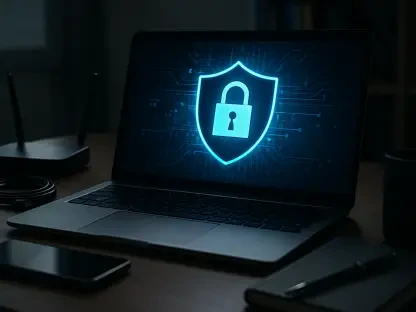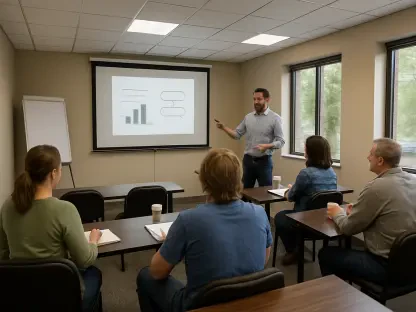Winter storms often present significant challenges for school districts, necessitating swift and strategic decision-making to ensure the safety and educational continuity of students. As weather conditions worsen, districts must weigh various factors to determine the best course of action—whether to hold in-person classes, shift to virtual learning, or cancel school entirely. These decisions are not taken lightly, as they have far-reaching implications for students, families, and staff. Districts must balance the immediate safety concerns with the educational needs of their students, all while maintaining clear communication with their communities.
Prioritizing Safety and Accessibility
One of the foremost considerations for school districts during winter weather is the safety of students and staff. Ensuring that buses can navigate icy and snow-covered roads without risk is essential. Districts meticulously assess road conditions, often in consultation with local authorities, to determine if transportation is feasible. The decision-making process includes evaluating the readiness of road clearance services, the ability of buses to operate safely, and the overall impact on commute times. Beyond transportation, districts also evaluate the potential hazards that severe weather conditions, such as extreme cold and high winds, pose to students and staff. The primary goal is to prevent any accidents or health issues that could arise from exposure to harsh winter elements.
Moreover, decisions are influenced by the geographical layout and infrastructure of each district. Rural areas with less frequent road maintenance may face greater challenges compared to urban districts. The condition of school facilities, such as heating systems and walkways, is also scrutinized to ensure they can sustain safe occupancy during adverse weather conditions. In addition to physical safety, mental well-being is considered, ensuring that the strain of hazardous travel does not negatively affect students and staff.
Evaluating Weather Severity
Decision-makers rely heavily on weather forecasts and specific metrics to guide their choices. Key indicators such as temperatures dropping into negative teens with wind chills are critical thresholds that often trigger school closures or shifts to virtual learning. Accurate and timely weather data is crucial for anticipating the extent and duration of winter storms. Meteorologists provide school districts with detailed forecasts, including potential snowfall amounts, ice accumulations, and expected temperatures. These forecasts help districts prepare in advance, allowing them to communicate decisions to families promptly and effectively. By staying informed about evolving weather patterns, districts can make informed decisions that prioritize safety while minimizing disruption.
Advanced weather prediction technologies and models contribute to the decision-making process. Tools such as Doppler radar, satellite imagery, and temperature sensors offer real-time data, enabling districts to respond quickly to changing conditions. The historical weather data of a region is also considered, helping districts understand patterns and prepare accordingly. This comprehensive approach ensures that decisions are not made in isolation but are part of a broader strategy to handle winter weather events efficiently.
Balancing Educational Impact and Family Logistics
School districts are acutely aware of the impact that multiple days of remote learning can have on families and students. The logistical challenges of remote learning, coupled with the potential educational setbacks, necessitate a balanced approach. Districts strive to blend traditional snow days, remote learning, and full cancellations to maintain educational continuity without overwhelming families. This balance aims to reduce the strain on parents who may need to adjust work schedules or find childcare, while also ensuring that students do not fall behind academically. Flexibility and adaptability are key components of this approach, allowing districts to respond to the unique needs of their communities.
To address these challenges, districts might develop tailored remote learning plans that accommodate varying home environments. This includes ensuring access to necessary technology, providing technical support, and considering the availability of internet services. Additionally, districts balance the use of asynchronous and synchronous learning to offer flexibility in how and when students engage with their coursework. Proactive measures such as distributing learning packets or facilitating temporary access to internet hotspots have also been employed to ensure equitable access to education during school closures.
Clear Communication with Stakeholders
Effective communication is paramount during winter weather events. School districts prioritize clear and timely messaging to ensure that parents, students, and staff are well-informed about decisions regarding school closures or shifts to virtual learning. This transparency helps to manage expectations and reduce confusion. Districts utilize various channels, including emails, text alerts, and social media, to disseminate information quickly. Repeated messaging ensures that all families receive the necessary updates, fostering a sense of preparedness and trust within the community. Regular updates and clear explanations of the decision-making process can help alleviate concerns and support community cohesion during disruptive weather events.
In addition to immediate notifications, districts often engage in pre-season outreach to educate families on their winter weather protocols. This proactive communication helps minimize last-minute misunderstandings and allows families to plan accordingly. Stakeholders are encouraged to stay connected through multiple communication platforms to ensure they receive timely updates. The inclusion of students in the communication loop, via age-appropriate messages, also helps them understand the situation and reduces anxiety.
Case Studies: Deer Creek, Weatherford, and Edmond Public Schools
Different school districts have unique approaches to handling winter weather challenges. For instance, Deer Creek Public Schools, led by Superintendent Dr. Jason Perez, opted for virtual learning during harsh weather conditions, emphasizing the importance of assessing road safety for families. Detailed communications and videos were sent to parents to explain the decision-making process. This transparency ensured that parents understood the rationale behind the decisions and felt confident in the district’s commitment to safety and educational continuity.
Conversely, Weatherford Public Schools demonstrated a mixed approach, alternating between in-person classes and full cancellations based on the severity of the weather. This flexibility allowed the district to adapt to changing conditions while maintaining educational standards. Weatherford’s strategy included evaluating each storm on a case-by-case basis, considering factors such as projected intensity and duration. By maintaining this adaptable approach, the district could navigate the challenges posed by winter storms more effectively.
In contrast, Edmond Public Schools chose to occasionally implement traditional snow days without remote learning. Recognizing the cumulative strain of consecutive remote days on families, Edmond Public Schools allowed traditional snow days to provide a break and reset for students and staff. This decision also acknowledged the socio-economic factors that might impede some families from fully participating in remote learning. By adopting a varied response strategy, each of these districts tailored their approach to meet the specific needs and circumstances of their communities.
Consensus and Adaptability
Winter storms often pose significant challenges for school districts, requiring rapid and strategic decision-making to ensure student safety and educational continuity. As weather conditions worsen, districts must assess numerous factors to determine the best course of action—whether to hold in-person classes, transition to virtual learning, or cancel school altogether. Making these decisions involves careful consideration of the immediate safety of students, staff, and families, as well as the educational impact of any disruptions. Balancing these elements is complex, as districts strive to maintain a clear line of communication with their communities, keeping everyone informed and prepared. Moreover, each decision has its own set of implications, influencing not just the daily routines of families and staff but also the broader educational goals of the district. Therefore, school districts need a well-coordinated approach and a flexible response plan to navigate winter storms effectively, ensuring that both safety and learning objectives are met.








